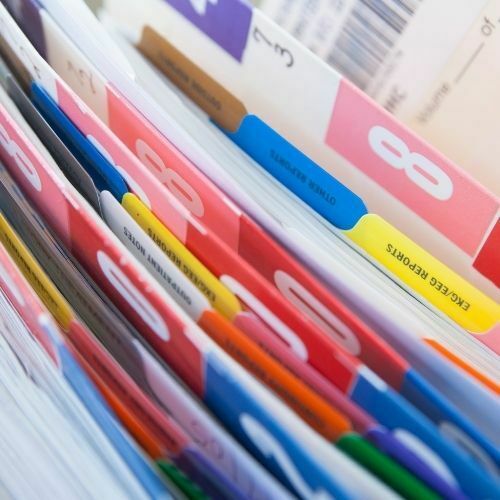Having difficulty tracking your constructions tools? Read this article now to find out how equipment tracking software can make tracking much easier!
How To Use Asset Tracking Software?
How To Use Asset Tracking Software?
Not too long ago, enterprises around the world tracked their assets the hard way. That is to say, with spreadsheets or physical ledgers. But with the advancement of technology, the smarter of the lot shifted towards asset tracking software.
If your company still uses spreadsheets and manual logbooks for asset tracking, you’re missing out a lot! Although asset management is one of the most important pillars of business management, you’re spending way too much time and money on it if you’re not utilising asset tracking software.
If you don’t already know what asset tracking is or how it works, you’ve come to the right place. In this blog post, you’ll learn how to use asset tracking software. We’ll also briefly go over some of its features and how you can use them to optimise your business operations.
What is Asset Tracking Software? – A Brief Intro
Asset tracking software, also known as asset management software, is a mobile and internet application that you can use to track your assets. It lets you create a unique asset profile for each of your assets and log it into an online database.
You can record every essential detail for an asset into its asset profile, ranging from asset ID to its location and from purchase receipts to the individual the item is assigned to. The software application gives you hands-on control of your assets and their information.
Individual asset profiles are stored in the asset register, a comprehensive list of all the assets your company owns. You can easily categorise different assets according to departments, locations and types for simpler navigation.
You can either use the software as a smartphone app or through an internet portal that can easily be accessed from any browser. Unlike spreadsheets or other manual asset tracking methods, asset tracking software offers a range of powerful features that you can utilise to streamline your asset management and enhance productivity in the workplace.
Setting Up the Asset Register
Once you’ve acquired asset tracking software, the first step is to set it up and that’s done by creating asset profiles for each of your assets and logging them into the asset register. It’s important to note that to make the most out of your asset tracking software investment, you need to keep it updated and accurate at all times.
Adding an item to the software is pretty easy. All you have to do is use the Add button on the software homepage. Enter the asset ID, and all the details you wish you to track and that’s it!
If you have to track a lot of assets, and you think setting up the register will take you a lot of time, you can delegate the task to multiple employees. The shareability of the software is one of the most useful features it has to offer. Multiple users can view, add and edit asset profiles no matter where they are. This is how asset tracking software lets you delegate tasks effectively. Brilliant, right?
Which Assets Should You Track?
Knowing the answer to this question is essential before you begin using the asset tracking software. And the correct answer is: it depends.
It depends on your asset tracking goals. You might want to use the software for fixed asset tracking to help you out with audits. You might need an IT asset management system for regulatory compliance. Or you might want to track your business assets for greater productivity and to save time and money.
If you’re using the software as a fixed asset register, then you may need only to track fixed assets. On the other hand, you would need to track all IT hardware and software for IT asset management.
How to Track Asset Location with Asset Tracking Software?
Location tracking is one of the most powerful features that asset tracking software has on offer. You can save tons of time that you’d spend otherwise looking around for lost and misplaced assets.
Asset tags are unique labels you can use to give an identity to each of your assets. This may be a QR code sticker or an RFID tag. Each time an asset tag is scanned, its location is automatically updated in the asset register. You don’t have to do anything extra to keep asset locations under check except just scan them.
If you want to find where an asset is, simply open its asset profile and view its last seen locations. Yes, it’s that straightforward.
Choose itemit, Choose Simplicity
There are quite a few asset tracking solutions you will find on the market, but if you’re looking for a mix of sophisticated features and ease-of-use, itemit is the one for you. itemit’s shareability and scalability set it apart from the competition.
itemit’s asset management software comes with a wide range of tools, each of which can be used to boost the efficiency of your team. From asset tracking to analysing, our software solution will surely help you out with decision making with its insightful reports.
To give yourself a competitive advantage, feel free to reach out to us at team@itemit.com. You can also try out itemit’s unique features for yourself and get a hands-on user experience with a 14-day free trial. Fill in the form below to start!
How To Use Asset Tracking Software
Choose a better way to track your assets
Start your free 14-day trial now
Instant access. No credit card details required.
Related articles
How To Track All of Your Construction Tools with Ease
The Use Of Artificial Intelligence And Equipment Tracking Systems
Can using artificial intelligence alongside your current equipment tracking system make a difference to your business? Read this article to find out!
Contingency Planning, Risk Management And Your Asset Register
What is contingency planning and risk management? How can a fixed asset register help with every aspect of your plan and management? Read this article now!






